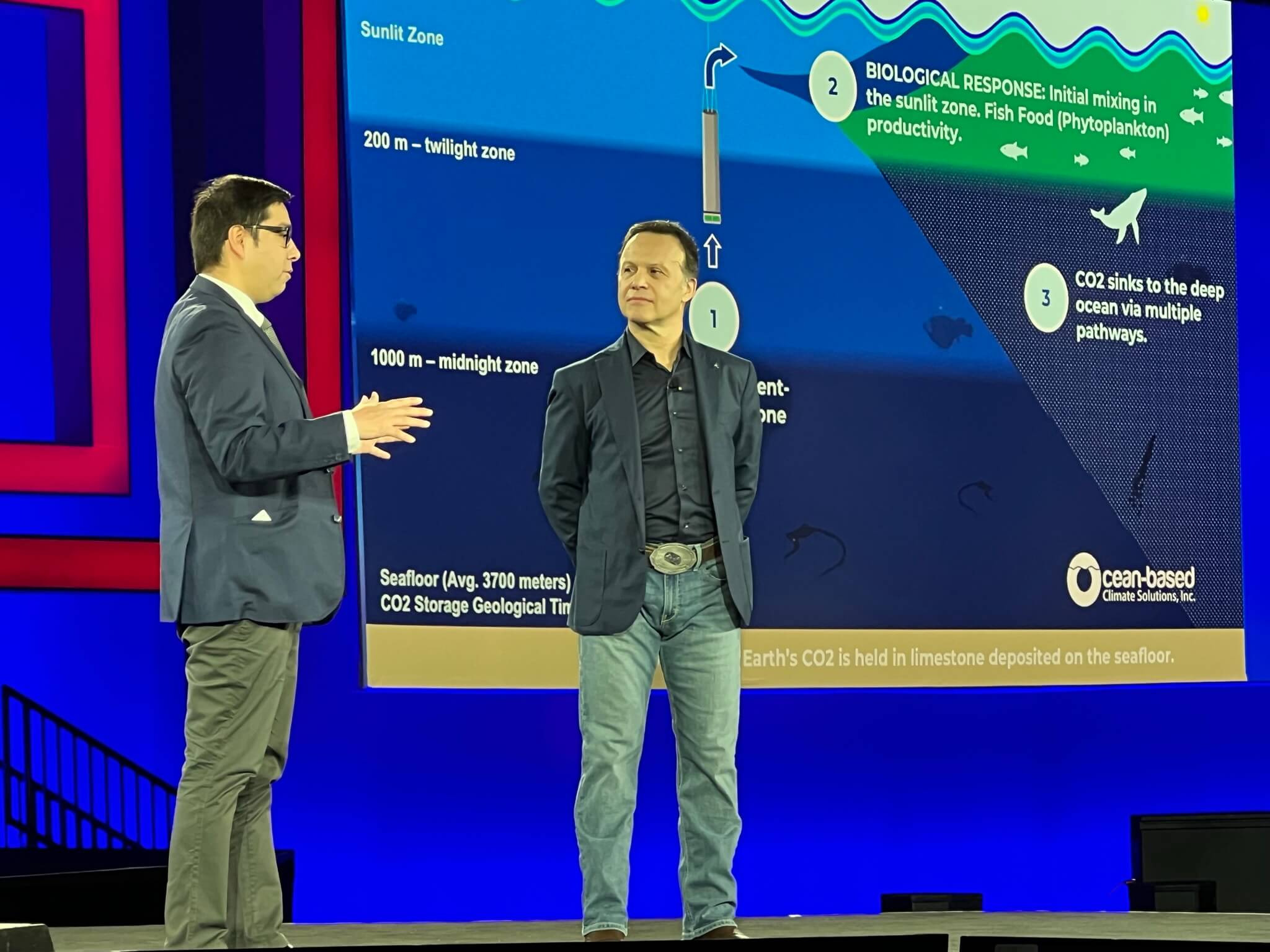The American company Ocean-Based Climate Solutions has developed a pump system that will pump nutrients from a depth of 400 meters to the surface and allow the growth of tiny algae that will carry out the process of photosynthesis and absorb the carbon in the atmosphere, so that it will eventually sink to the bottom of the ocean

The American company Ocean-Based Climate Solutions has developed a pump system that will pump nutrients from a depth of 400 meters to the surface and allow the growth of tiny algae that will perform the photosynthesis process and absorb the carbon in the atmosphere, so that it will eventually sink to the bottom of the ocean.
In an interview with the scientist website, Salvador Garcia, one of the heads of the company, explains that the phytoplankton feed on tiny animals - zooplankton and small fish, and then move further up the food chain. This process is responsible for great fishing grounds off the coast of California, Peru and Northwest Africa. However when we sail away from the coasts there is no phytoplankton and the oceans become marine deserts. Blue water is beautiful but it is dead. Green water thrives.
"Our technology uses wave energy to pump nutrients from the twilight zone in the deep sea to the sunny zone, resulting in a biological reaction that converts CO2 emissions into food for ocean fish. Given the food, the mass of the phytoplankton can double every 24 hours. Over time, the result is "marine snow" low in dead or eaten phytoplankton, and all the marine life it nourishes sinks to the depths of the ocean in a natural way of sequestering carbon.
How did you design the system?
"We designed our pumps using the SolidWorks and 3Dexperience design systems of Dassault Systèmes, which allow simulation of compositions of different materials. We designed it to run 100% on ocean wave energy and solar energy, including the GPS. In addition, we designed the system to survive huge waves, so we designed the system so that the pipes are always under the waves and come out the other side. In addition we minimize the number of moving parts. Another challenge is planning a vertical layout of pipes 400 meters long. The solution is flexible fabric tubes."
"We pump water from a depth of 400 meters, this is ocean water that is in the twilight zone - that is, not too close to the bottom and not to the sea level. This area is rich in nutrients, while close to the surface there are almost no such substances, and therefore most of the ocean areas are essentially marine deserts. When phosphates, nitrates and silicates and trace minerals such as iron rise from the depths of the ocean to the surface, a colony of phycoplankton is formed - tiny plants that carry out photosynthesis need sunlight, to -CO2 and for food. This way they absorb carbon dioxide and emit carbon just like land plants. In fact, the phycoplankton give the waters near the beaches their green color. Water Blue water is lifeless water - a dead ocean. There we want to deploy our technology to revive them."
What is the company's business model?
"The company's business model will come from companies that want to zero their carbon emissions, for example airlines. Each pump can reduce 250 tons of carbon dioxide per day and this is a conservative estimate. We are currently developing the technology, we have already built two such pumps and this year the deployment of another pump is expected. We applied for a grant from NOAA (US National Oceanographic and Atmospheric Agency) to test our methodology for real-time measurement of the carbon we remove from the water using our technology."
More of the topic in Hayadan:
- For those who were looking for evidence of global warming / Dr. Assaf Rosenthal
- In the short term, the fishing must be regulated and the pollution of the sea with sewage must be stopped. In the long term, to save life in the sea, carbon emissions must be stopped
- The effect of warming on life in the sea
- Lack of oxygen (hypoxia) kills life in the sea

One response
Sounds promising
Now we need to fertilize the oceans and solve global warming